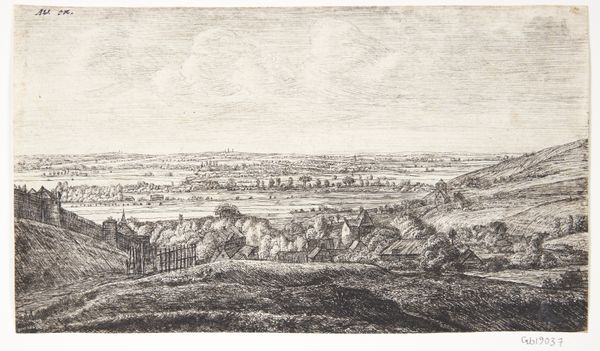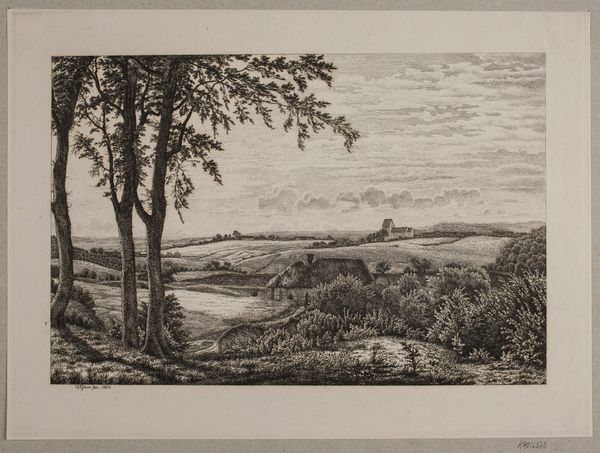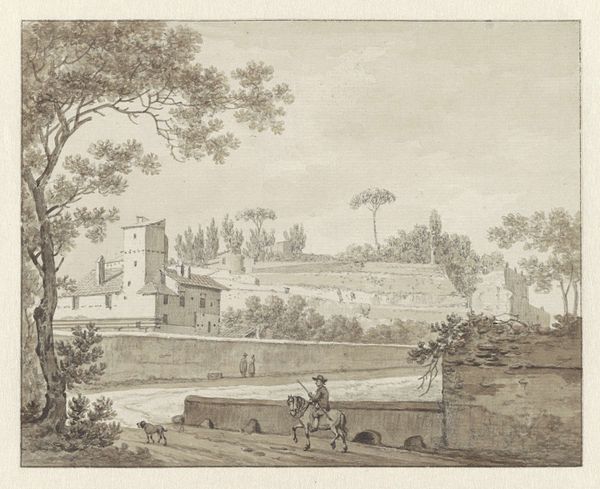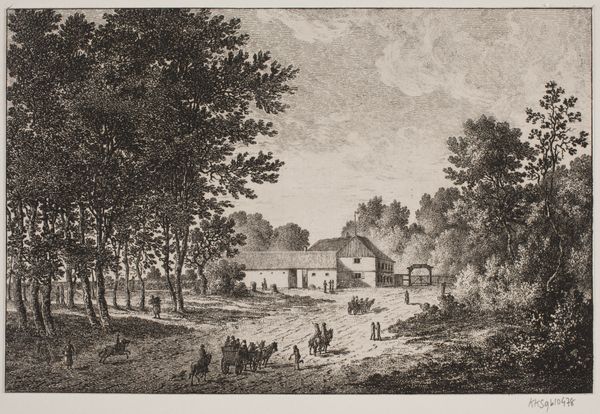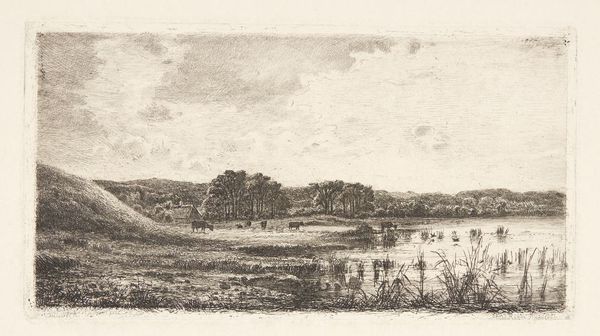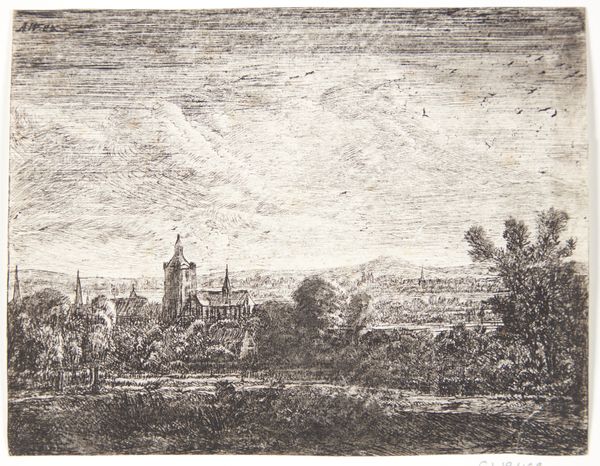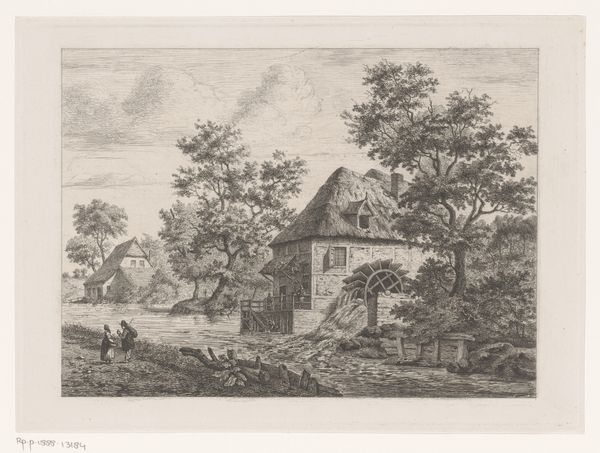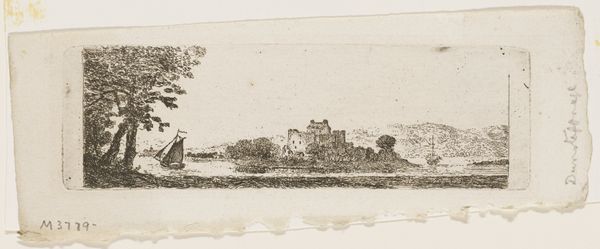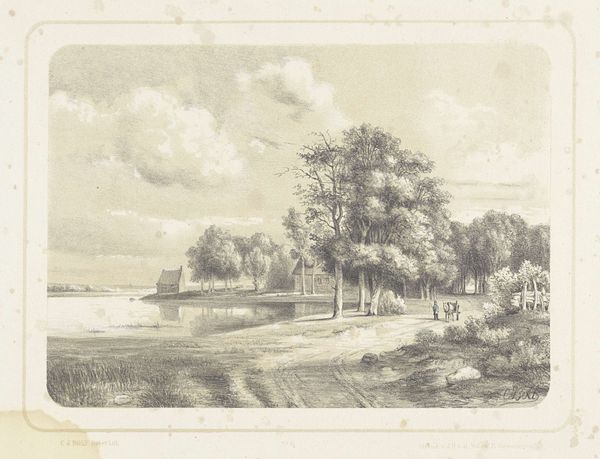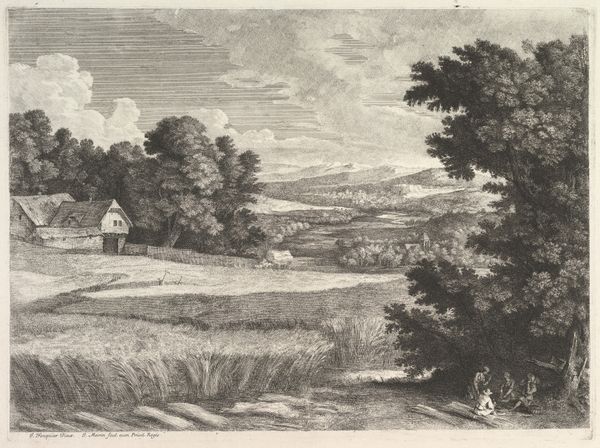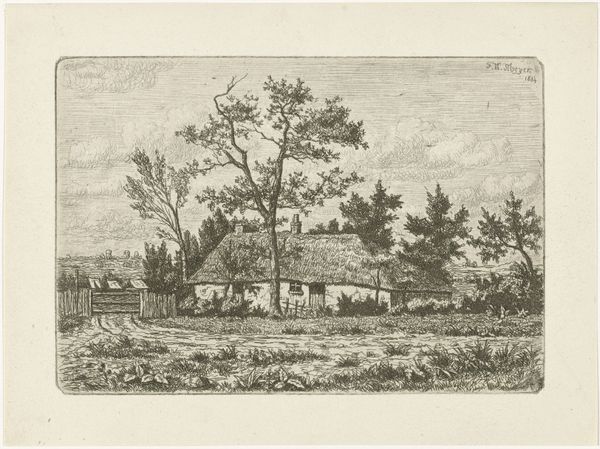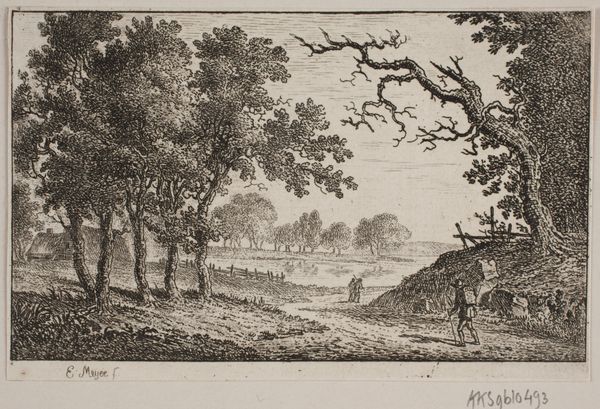
print, engraving
# print
#
landscape
#
engraving
#
realism
Dimensions: 131 mm (height) x 195 mm (width) (billedmaal)
Curator: Looking at this image, one feels a distinct sense of calm and perhaps even detachment. Editor: Indeed. Here we have Elias Meyer's engraving titled "Bernstorff fra Fortunen," dating between 1763 and 1809. It’s a print rendered with fine detail, showing a landscape featuring the Bernstorff Palace, situated within a park-like setting. Curator: The means by which the artist has coaxed so much detail from a simple engraving is truly remarkable. Look at the textural contrast between the densely hatched trees and the smoother, gradated sky. What specific kind of labor and skill would be required to produce such a composition? Editor: This print allows us to investigate 18th century Danish society. Meyer captured not just the estate itself but the power dynamics inherent in its ownership. Bernstorff Palace was a site of political influence, and by showing this land, Meyer provides a commentary, even if subtle, on the prevailing socio-political environment. It implicitly highlights a system of land ownership and privilege. The two people in the foreground almost feel like observers. Curator: Yes, observers perfectly describes them, with labor being organized around them in the distance. But back to the artistic process. I wonder what kind of tools would produce lines like these. Did Meyer perhaps train with particular masters, or follow particular regional practices in producing engravings such as these? Editor: Considering landscape art during this time period and how it connects to ideas around nationhood and identity, what's included here – the specific breed of livestock grazing, the architectural style, even the types of trees, contribute to constructing a uniquely Danish vision. Curator: Exactly, the construction of “Danishness” involves tangible, material realities. Even down to the type of paper used for printing, we can explore what this choice signifies for the accessibility of art and the formation of taste amongst the elite. Editor: Right. I also find it interesting how the figures in the landscape contribute to a sense of scale but also, to a visual narrative of social hierarchy. They may represent the public interacting with the private grounds of the palace, suggesting perhaps access and control, but the framing makes one contemplate what is on the periphery or who is left out. Curator: So true. Investigating these aspects lets us understand how aesthetics and political thought intertwined within artistic production. It reminds us that art functions as a social product reflective of its period. Editor: Reflecting on "Bernstorff fra Fortunen", it shows how much even a serene landscape engraving like this reveals regarding history and material circumstances. Curator: Yes, truly an engagement of craftsmanship, but with considerable societal reflections, as well.
Comments
No comments
Be the first to comment and join the conversation on the ultimate creative platform.
